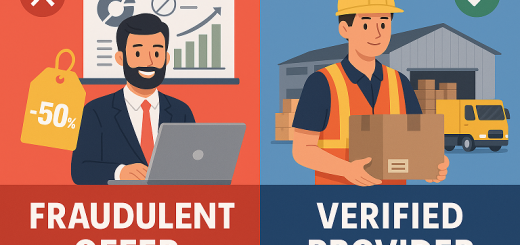The Ultimate Guide to Mastering Package Consolidation: Slash China-UK Shipping Costs in 2025
Struggling with sky-high shipping costs from China to the UK? You’re not alone. In early 2023, rates plunged to record lows—with some carriers offering desperate quotes as low as $998 per 40ft container from China to Felixstowe. While prices have stabilized since then, consolidation remains your #1 weapon for extreme savings13.
Why Consolidation Is Your Secret Weapon for 2025 Shipments
Package consolidation transforms fragmented, expensive shipments into a unified, cost-efficient process. By combining multiple smaller parcels into a single consolidated shipment (Less than Container Load – LCL), you unlock:
- Radical cost reduction: Shared container space = up to 60% lower per-unit costs vs. solo shipments2
- Carbon footprint reduction: Fewer vessels, trucks, and handling cuts emissions by up to 30%2
- Enhanced security: Reduced touchpoints and sealed consolidation warehouses minimize loss/damage risks3
- Simplified logistics: One customs clearance, one tracking ID, one delivery appointment—no more chasing 12 parcels from 5 suppliers3
*”LCL consolidation slashed our per-unit freight costs by 54%. For e-commerce sellers, this is the difference between profit and loss.”* — Eva Müller, Berlin-based dropshipper
Step-by-Step: How Consolidation Works from China to the UK
1. Strategic Planning & Supplier Coordination
- Demand forecasting: Time shipments to avoid Q4 peak surcharges (November-January rates spike 25-40%)7
- Supplier alignment: Require all factories to use identical packaging specs (maximize container cube utilization)
- Incoterms clarity: Ship FOB (Free On Board) to control freight decisions—never use EXW unless you have a China-based agent5
2. Warehouse Consolidation: Where Magic Happens
- Pre-shipment staging: Goods from multiple suppliers arrive at a Shenzhen/Shanghai consolidation hub
- Optimization process: Pros use dimensioners and palletizing robots to achieve 92-95% container fill rates
- Documentation bundling: Single commercial invoice/packing list replaces 20+ separate ones—saving hours on customs clearance3
3. Customs Made Painless (Yes, Really!)
- HS code harmonization: Ensure all similar goods share one commodity code (e.g., “95030010: Electric scooters” not “toys”)
- Duty minimization: Consolidated shipments often qualify for “First Sale” programs—duties calculated on factory price, not resale value
- Clearance hacks: Use AEO-certified forwarders for faster UK clearance (validated partners skip 80% of inspections)3
2025 Rate Showdown: Air vs. Sea vs. Rail
*Table: China-UK Shipping Cost Comparison (July 2025 Estimates)*
| Method | Avg. Cost | Transit Time | Best For | Consolidation Savings |
|---|---|---|---|---|
| Air Express | $8.50/kg | 3-5 days | Urgent, high-value items <50kg | 12-18% via air hubbing |
| Sea LCL | $145/m³ | 28-35 days | 1m³+ shipments, non-perishables | 40-60% vs. FCL |
| Sea FCL | $2,462/FEU | 30-40 days | 10+ m³, full container loads | 22% vs. spot rates |
| China Rail | $6.20/kg | 18-22 days | West/Central UK destinations | 15-30% via groupage |
Source: Freightos Baltic Index, Triplefast data79
Pro Tip: Hybrid solutions crush costs. Ship 80% via sea LCL + rush 20% by rail. Customers get orders faster while you save 37% overall.
Hidden Fees Exposed: The Consolidation Advantage
Non-consolidated shipments get slaughtered by stealth fees. Consolidated LCL avoids:
- Container imbalance charges (CIC): $120-250/container when empty containers pile up in the UK (your consolidation fills them)
- Demurrage/detention: 3+ free days at ports vs. standard 1 day for loose shipments
- Peak season surcharges (PSS): July-August fees waived for contracted consolidators19
5 Insider Tactics for Maximum Savings
- Stackable packaging mandate: Require suppliers to use 1200x800mm EU pallet-standard boxes—fits 33% more goods vs. random sizes
- Port pair optimization: Shanghai→Felixstowe costs 18% less than Ningbo→Southampton (but adds 3 days transit)1
- Weekly consolidation cycles: Save 29% vs. on-demand shipping—forwarders reward volume commitments
- DDP (Delivered Duty Paid): Include UK VAT/duties upfront—no surprise £150+ “handling fees” from couriers9
- Insurance bundling: Cover all goods under one $150 policy vs. $15/parcel—saves 65% for 20+ items3
Real-World Consolidation: Triumph Case Study
Challenge: Bristol-based decor retailer received 12-15 weekly parcels from Yiwu factories. Costs soared to £11.20/kg with DHL.
Consolidation solution:
- Weekly LCL consolidation in Shanghai
- All shipments palletized, documented as one “Home Decor Articles” HS code
- Felixstowe clearance via AEO forwarder
Results:
⬇️ Cost/kg: £11.20 → £4.30 (62% reduction)
⬇️ Customs fees: £32.50/shipment → £89/consolidation (73% drop)
⬆️ Damage claims: 7% → 0.4% (secure palletizing)
Future-Proofing: 2026 Consolidation Trends
- AI-driven matching: Platforms like Freightos auto-group compatible shipments from unknown buyers (think: UberPool for freight)7
- Green discount programs: Carriers offer 5-7% discounts for emissions-savvy consolidators (Maersk ECO Delivery, CMA C+)**
- Blockchain documentation: One-time HS code/tax validation—never recertify identical shipments
Your Action Plan: Start Consolidating in 10 Days
- Choose your hub: Compare Shenzhen (cost leader) vs. Shanghai (speed leader) consolidation warehouses
- Book a trial LCL: Ship 2-3 m³ via Triplefast or Meorient—validate savings before scaling9
- Demand tech integration: Require API links between your Shopify/eBay store and forwarder’s tracking system
- Audit relentlessly: Measure cost/kg, damage rate, and days saved monthly—consolidation should improve all three
Final Cost-Slashing Verdict: In 2025’s volatile market, package consolidation isn’t just smart—it’s existential. With sea LCL rates holding at 55% below 2022 peaks, now’s the time to rebuild your supply chain around consolidation. The result? Brutal cost reductions, happier customers, and a planet-friendlier footprint.

